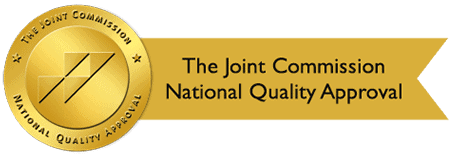By: Design for Change Recovery
Categories:
Is There a Difference Between Overamping and Overdosing? Here’s What You Need to Know
You are here:Overamping and overdosing have many similarities, making it hard to distinguish between them. Typically, in either case, someone has taken too much of a drug and is at risk for serious or fatal consequences.
While overamping is often viewed as a harmless way to get high, it can be physically and mentally harmful.
Below are some things you need to know about the difference between overamping and overdosing, especially if you use stimulant drugs for recreational purposes.
What Is Overamping?
 What is overamping? It occurs when someone takes too many stimulants at once. The reasons for increasing the dosage vary. For instance, after taking a prescription stimulant for a long time, a person may feel that it isn’t working properly, so they take extra. Others intentionally take large doses for the purpose of getting high.
What is overamping? It occurs when someone takes too many stimulants at once. The reasons for increasing the dosage vary. For instance, after taking a prescription stimulant for a long time, a person may feel that it isn’t working properly, so they take extra. Others intentionally take large doses for the purpose of getting high.
Although the term is often used in various ways, it refers to a state of overstimulation. Typically, the term is used by many people to describe overdosing on speed.
The effects of overamping differ from one person to another, depending on several factors. For instance, someone who is sleep-deprived will react differently to high doses of stimulants than someone who is not exhausted. The effects will also be influenced by other substances a person may have ingested such as alcohol, marijuana, or opioids.
Difference Between Overamping and Overdosing
Overamping can be considered a form of overdose, however, they are entirely different. Overdosing is the result of using excessive amounts of drugs such as opioids or alcohol. These substances can slow down the body to the extent that life-threatening side effects occur. In contrast, overamping results in speeding up the body until it is unable to keep up.
Approximately 20% of all overdoses involve a stimulant drug. In some cases, stimulants are present in overdoses that are opioid or alcohol-related. Many people mistakenly believe that you can’t overdose on stimulants, but the effects of the drug are unpredictable and can happen regardless of the size of the dose.
Which Stimulants Are Most Commonly Misused?
Prescription stimulants are most commonly misused. They are often prescribed to treat ADHD or narcolepsy. The purpose of the drugs is to increase alertness, energy, and attention. As such, some people mistakenly believe the drug will make them smarter.
Misuse of stimulants is characterized by:
- Taking the drug in an unprescribed manner.
- Using someone else’s stimulant medication.
- Taking the medication specifically to get high.
The most commonly misused stimulants include prescription stimulants and street drugs such as:
- Dextroamphetamine (Dexedrine®)
- Methylphenidate (Concerta®, Ritalin®)
- Dextroamphetamine/Amphetamine (Adderall®)
- Ecstasy (MDMA)
- Methamphetamine
- Cocaine
People who are intent on overamping will crush the tablets or open the capsules, mix the powder with water, and inject it into a vein. Others choose to snort or smoke the powdered form.
Dangers of Stimulant Overamping and the Warning Signs
Overamping can produce many unpleasant or harmful signs and symptoms such as:
- Anxiety, panic
- Agitation, aggressiveness
- Restlessness, irritability
- Hypervigilance
- Hallucinations, paranoia
- Palpitations, chest pain
- Increased blood sugar
- Lightheadedness, headache
- Nausea or vomiting
- Tremors, seizures
- Stroke symptoms
- Elevated temperature
- Rapid breathing
The CNS can be confused when stimulants and alcohol are used together. This happens because alcohol is both a stimulant and a depressant. Side effects can be severe when the two substances are combined.
Combining stimulants with marijuana, which is also a stimulant and depressant, can lead to enhanced effects that may be harmful.
Some people take stimulants to offset the side effects of opioids which can lead to serious side effects because the drugs have opposite effects.
Essentially, the dangers of stimulant overamping are significant and can lead to stroke or heart attack even in an otherwise healthy person.
Long-term misuse of stimulants can lead to increased tolerance and substance use disorder. SUD is characterized by the need for more frequent or higher doses of the drug. The individual will experience withdrawal symptoms when the drug is withheld, leading them to seek more of the substance.
Design for Change Recovery Offers Proven Stimulant Addiction Treatment
Professional help is necessary when stimulant misuse or overamping leads to addiction. Overcoming stimulant addiction requires a combination of therapies that address the physical, mental, and emotional aspects. With this approach, long-term recovery is more likely.
Our program is flexible and can be customized based on your specific requirements. We offer options such as cognitive-behavioral therapy, group and individual counseling, holistic therapies, relapse prevention classes, and more. You can expect a comforting environment staffed with compassionate, highly-skilled professionals to ensure that your stay with us is a positive experience.
If you are misusing stimulant drugs, contact Design for Change Recovery today. Getting treatment as soon as possible means you will have fewer complications to deal with. Reach out to us at our Lancaster, CA facility so we can help you get started on the path to wellness
Sources:
- nida.nih.gov – Prescription Stimulants DrugFacts: What Are Prescription Stimulants?
- adai.uw.edu/ – Opioids and Stimulants: What Are They and How Are People Using Them?


